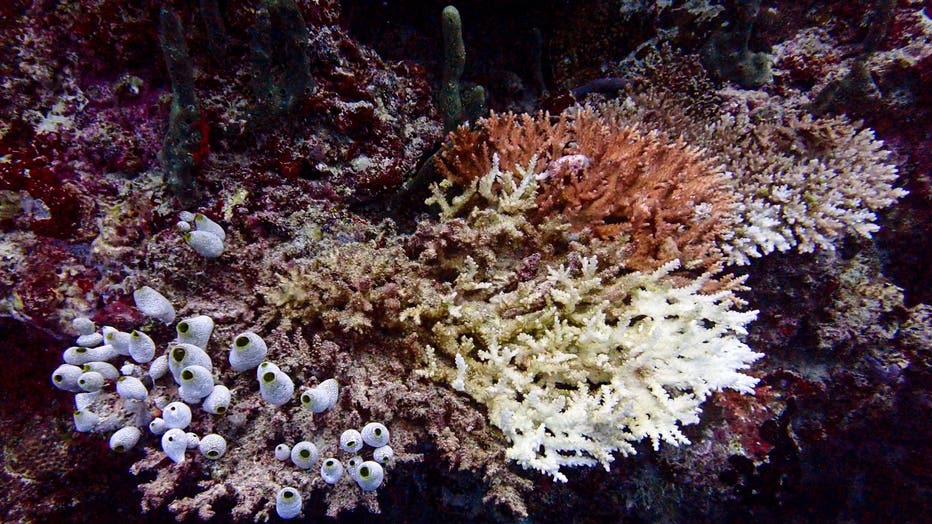'Kiss of death': 84% of world's coral reefs hit by worst bleaching event on record
Research team discovers world's largest coral in southwest Pacific
A group of scientists working aboard a research vessel in the southwest Pacific Ocean has discovered the world’s largest coral. Thirty-four meters wide and thirty-two meters long, the gigantic organism is a complex network of coral polyps—tiny individual creatures—that have grown over a span of three centuries. (Video: National Geographic Pristine Seas)
Harmful bleaching caused by warming oceans has reached 84% of the world’s coral reefs, killing the "rainforests of the sea" that are key to seafood production, tourism and protecting coastlines from erosion and storms.
According to the International Coral Reef Initiative, this global bleaching event is the worst of its kind in recorded history. It’s the fourth bleaching event since 1998.
What is coral bleaching?
What we know:
Coral reefs get their bright colors from the colorful algae that live inside them and are a food source for the corals. Prolonged warmth causes the algae to release toxic compounds, and the coral eject them. A stark white skeleton is left behind, and the weakened coral is at heightened risk of dying.

This underwater photo taken in the Maldives on September 26, 2024 shows dead and bleached branch corals. A global coral bleaching event that began in 2023 has quickly grown to the largest on record. (Photo by SARAH LAI/AFP via Getty Images)
This bleaching event, which began in 2023, has been so severe that NOAA’s Coral Reef Watch program has had to add levels to its bleaching alert scale to account for the growing risk of coral death.
What we don't know:
It’s not clear when the crisis will end.
What they're saying:
"We may never see the heat stress that causes bleaching dropping below the threshold that triggers a global event," said Mark Eakin, corresponding secretary for the International Coral Reef Society and retired chief of the Coral Reef Watch program of the U.S. National Oceanic and Atmospheric Administration. "We’re looking at something that’s completely changing the face of our planet and the ability of our oceans to sustain lives and livelihoods," Eakin said.
RELATED: Deadly toxic algae bloom causing sea lions to become sick, violent
Why you should care:
Coral reefs are sometimes dubbed "rainforests of the sea" because they support high levels of biodiversity — approximately 25% of all marine species can be found in, on and around coral reefs.
The backstory:
Last year was Earth’s hottest year on record, and much of that is going into oceans. The average annual sea surface temperature of oceans away from the poles was a record 20.87 degrees Celsius (69.57 degrees Fahrenheit).
What's next:
Scientists are working to restore the reefs. One Dutch lab has worked with coral fragments, including some taken from off the coast of the Seychelles, to propagate them in a zoo so that they might be used someday to repopulate wild coral reefs if needed. Other projects, including one off Florida, have worked to rescue corals endangered by high heat and nurse them back to health before returning them to the ocean.
What you can do:
Scientists say despite those efforts, it's essential to reduce greenhouse gas emissions that warm the planet, such as carbon dioxide and methane.
"I think people really need to recognize what they’re doing … inaction is the kiss of death for coral reefs," said Melanie McField, co-chair of the Caribbean Steering Committee for the Global Coral Reef Monitoring Network.
RELATED: Trump hopes to boost coal industry with executive order
The other side:
President Donald Trump has moved aggressively in his second term to boost fossil fuels and roll back clean energy programs, which he says is necessary for economic growth.
The Source: This report includes information from The Associated Press.

